 One thing that remains unacknowledged in anti porn literature I’ve read is that classification guidelines in Australia already address the kind of pornographic sexual violence to which the campaigners are opposed. This is well explained in Nick Ross’s article on the classification riddle, with these examples of what the “Refused Classification” category disallows:
One thing that remains unacknowledged in anti porn literature I’ve read is that classification guidelines in Australia already address the kind of pornographic sexual violence to which the campaigners are opposed. This is well explained in Nick Ross’s article on the classification riddle, with these examples of what the “Refused Classification” category disallows:
No depiction of violence, sexual violence, sexualised violence or coercion is allowed in the category. It does not allow sexually assaultive language. Nor does it allow consensual depictions which purposefully demean anyone involved in that activity for the enjoyment of viewers.
Fetishes such as body piercing [and tattooing], application of substances such as candle wax, ‘golden showers’, bondage, spanking or fisting are not permitted. As the category is restricted to activity between consenting adults, it does not permit any depictions of non-adult persons, including those aged 16 or 17, nor of adult persons who look like they are under 18 years….
Depictions of bestiality, necrophilia, incest, drug use, paedophilia, detailed instruction or promotion in matters of crime, high-impact violence and cruelty…
And with regard specifically to violence associated with sex, the following is in the refused classification category: Violence: rough or injurious physical force, action, or treatment. This includes actual violence (shooting, punching, pushing, throwing a person, etc), implied violence (gunshot sound effect, news article, mugshots), aftermath of violence (person with injury, dead body), threat of violence (“I’ll kill you”), and violent behavior (woman holding gun while engaged in sex with man). Note down ANY and ALL violence, even if it looks contrived or unrealistic (plastic swords, etc). Depictions of dead people are also not permitted.
When we have restrictions such as these already in place, what more can anti porn campaigners want?
In my opinion some campaigners are engaged in a moral battle to control who may desire whom, when and how. Their arguments are founded on conservative moral assumptions about what sex is or ought to be, how it can and can’t be performed, and by whom. To this end they define pornography as not about sex, but solely about violence against women.
Anti porn campaigners conflate sexual violence and exploitation with pornography to strengthen their argument against it, even though there’s a variety of porn available, from the inoffensive to the frightening. They allow no exceptions: their position is that all porn is bad because all porn is inherently violent and exploitative.
They also conflate fantasy with reality. Women who enjoy rape fantasies for example are not usually hoping to be raped. Some 31 to 57 per cent of women are estimated to have such fantasies, and there are other fantasies both women and men enjoy without the desire to act them out, as this article explains. Mentally healthy people know the difference between fantasy and reality. What I suspect anti porn campaigners would like is for people not to have fantasies of domination and submission, or any other fantasy that involves what the activists perceive as contrary to what sex is “supposed” to be. The battle is not only to control how we perform sex, but also to control how we imagine it by casting desire as violent and exploitative if it transgresses conservative boundaries.
For some women the consumption of porn is a radical act, and the acknowledgement that we experience desires not traditionally associated with our sex can be liberating. This doesn’t make us disturbed or bad. One of the dangers of the anti porn campaign is that it seeks to repress desires it considers inappropriate. This includes women’s desires, and as we have not yet entirely clawed our way out of sexual repression we need to be conscious of the possibility of losing what we’ve gained.
Porn undeniably appeals strongly to emotions and desires, otherwise there wouldn’t be so much of it. Pornography conveys a multitude of messages that elicit complicated responses. Sexual emotions are immensely complex. Many of our desires are formed or influenced long before we begin our sexual lives. Pornography, whether those against it like it or not, speaks to us about very real desires. Not all of them are easy to accept, nevertheless we are creatures of the dark as well as the light, and accept this we must, bearing in mind that we have laws in place to deal with real violence and exploitation.
Anti porn campaigners often express a view of sex that is sentimental and euphemistic. Sex should be devoid of messiness, vulgarity, impulses to power and aggression of any kind. Certain sexual acts disgust them, as campaigner Gail Dines makes graphically apparent. What really matters in sex, they claim, is the relationship. Sex as the expression of complicated emotions, not all of them pretty, sex as a performance of erotic power, male or female, and sex as a means of gratifying physical desire without emotional commitment, is apparently abhorrent to them.
As campaigner Emma Rush wrote recently: “To be anti-porn does not mean being anti-sex. Rather, it promotes sex in the context of loving relationships.” Yet “loving relationships” are only one avenue of sexual expression. Sex takes place in many contexts, and to imply that unless it is in a context of “loving relationship” it’s violent, destructive, immoral and pornographic is blatantly wrong. For example, is the author saying that couples in the throes of separation ought not to have sex because they no longer wish to maintain their “loving relationship?” Is she arguing that nobody should have sex until they know they love one another? Just what is her definition of a “loving relationship?” What passes for love may at times be far from what some consider ideal, and love can be as confusing as sex.
Another anti porn activist, Clive Hamilton, makes this observation about “casual” sex: Perhaps this is why many people are left with a vague feeling that each time they have casual sex they give away a little of themselves, that something sacred is profaned and they are diminished as a result. Casual sex truly is meaningless sex.
The construction of a sexual ‘ideal’ or indeed an ideal of “love” that is exterior to the imperfect human condition, complete with prescriptives and prohibitions for its attainment, is not entirely dissimilar to constructing a theology, in that both demand an act of belief in a point of origin, an authoritative external presence, from which instruction on the rightness or wrongness of a practice emanates.
Claims of the rightness of a sexuality confined to “loving relationships” and the alleged profanity of casual sex must refer to the commandments of some metaphysical authority, unless Rush and Hamilton assume an infallible authority for themselves. Alternatively, their positions are social constructs, and if that is the case, we need to be convinced why they ought to have more influence over us than any other social construct. Empirical evidence for claims is the best way to establish this. Rush and Hamilton et al need to prove the “sacredness” of sex, the profanity of casual sex, and the need to confine sex to loving relationships, or risk being perceived as founding their campaign in a crypto theology that is of no real consequence to anyone other than those who believe in it.
While there is no doubt sex can be a powerfully binding metaphysical experience, this is not its only function. And isn’t it possible to have an intensely powerful experience with a “casual” partner? Sex can transport us to an altered and exalted state of consciousness. Sexual emotions can break through inhibitions and boundaries. Does it happen every time we have sex? If it doesn’t, even within a loving monogamous relationship, has sex been “profaned?”
Demagogic moral outrage of the kind exhibited by many anti porn activists is fuelled by emotions that cast any sexual practices other than those they deem acceptable as immoral and violent. As the law already offers protection, anti porn campaigners are likely on a crusade for social purity based on personal preferences. It’s a battle for control over sexual expression, for what people do and watch in the privacy of their homes. It’s a battle to control the manifold expressions of desire. It’s a familiar battle for control over the public discourse on sex, and it’s one that must be contested whenever it reappears. Replacing one dominant representation of sexuality with another is no answer and does little but create another class of “deviance.”


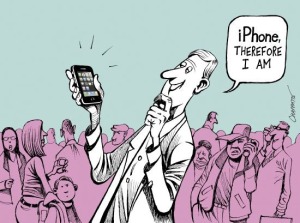
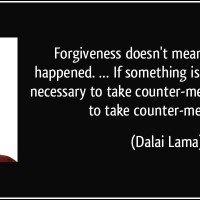
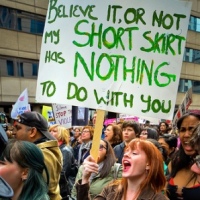

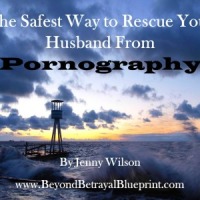

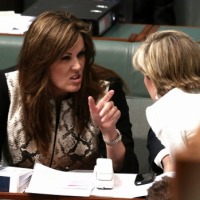

































Recent Comments